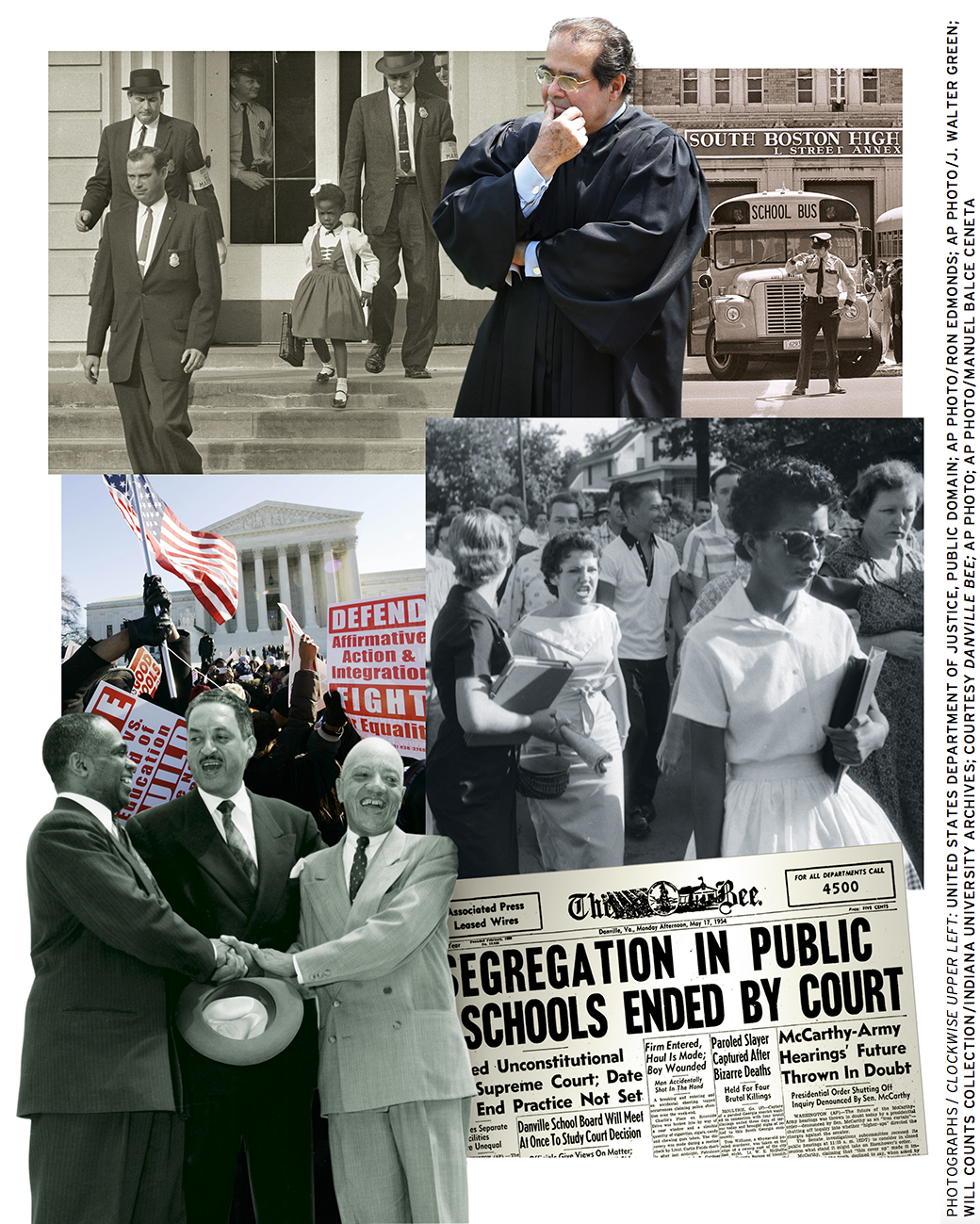 Brown v. Board of Education, the landmark 1954 decision barring school segregation, is a cornerstone of the American legal tradition. After more than a half century, however, its precise meaning remains contested. While conservatives view Brown as prohibiting the government from using racial classifications except in extraordinary circumstances, liberals believe the ruling leaves ample room for elected officials to take race into account when seeking to promote equal opportunity. Which interpretation prevails will continue to determine the extent to which public colleges can use race as a factor in admissions decisions, as well as the scope of school districts’ efforts to create more integrated schools and classrooms.
Brown v. Board of Education, the landmark 1954 decision barring school segregation, is a cornerstone of the American legal tradition. After more than a half century, however, its precise meaning remains contested. While conservatives view Brown as prohibiting the government from using racial classifications except in extraordinary circumstances, liberals believe the ruling leaves ample room for elected officials to take race into account when seeking to promote equal opportunity. Which interpretation prevails will continue to determine the extent to which public colleges can use race as a factor in admissions decisions, as well as the scope of school districts’ efforts to create more integrated schools and classrooms.
In this issue’s forum, legal scholars Shep Melnick and James Ryan examine this debate through the lens of the education rulings of the late Supreme Court justice Antonin Scalia. Melnick argues that Scalia’s conservative reading of Brown has solid roots in the text of the U.S. Constitution and usefully prohibits judges from imposing their policy preferences on the nation’s schools. Ryan, meanwhile, contends that Scalia’s rulings reveal the extent to which the court’s most famous “originalist” was willing to depart from his principles in order to strike down policies he found objectionable. At stake in their debate is nothing less than this question: Is our Constitution colorblind?
Equal Protection Bars Racial Favoritism
by R. Shep Melnick
Choosing Judicial Activism over Originalism
by James E. Ryan
This article appeared in the Fall 2017 issue of Education Next. Suggested citation format:
Melnick, R.S., and Ryan, J.E. (2017). Is the Constitution Colorblind? Debating Antonin Scalia’s record on race and education. Education Next, 17(4), 50-57.




